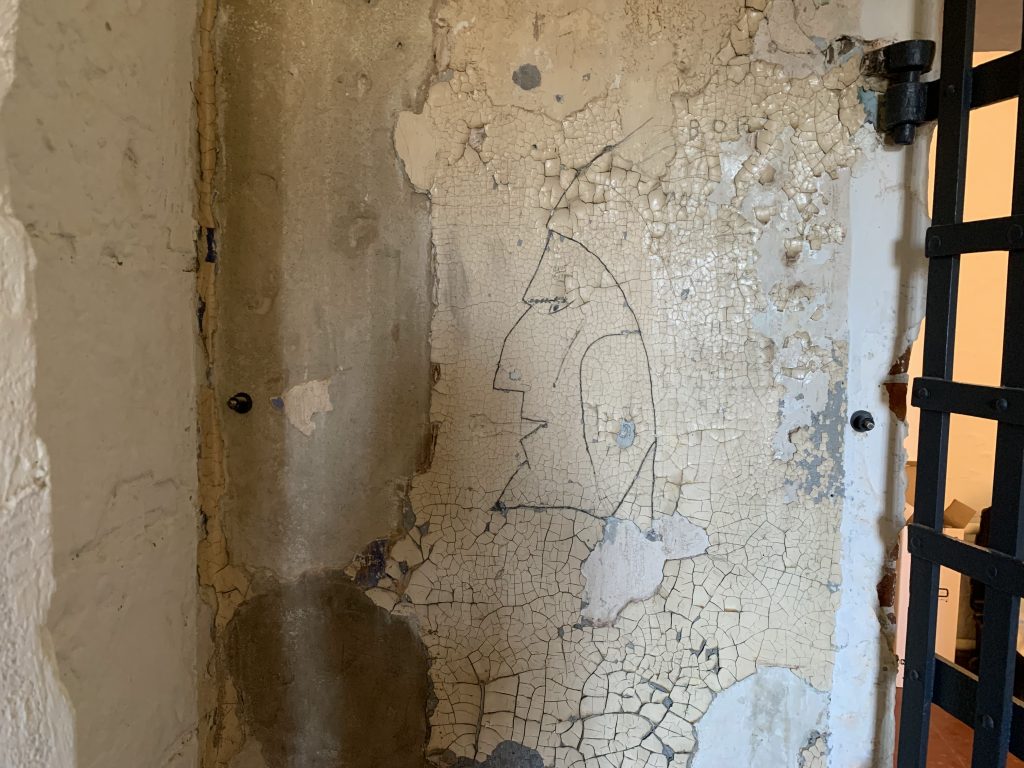
The county earned a grant to help it rehab and renovate the historic prison museum in Mount Holly.
The Burlington County Historic Prison Museum is undergoing renovations that include replacing the prison roof and cleaning and is expected to reopen in December.
But the graffiti stays. The images scrawled on prison walls are being preserved by experts from Jablonski Building Conservation (JBC).
Located on High and Grant Streets in Mount Holly, the stone and brick prison museum building housed criminals from 1811 to 1965. It was designed by Robert Mills, the American architect who later designed the Washington Monument; the U.S. Treasury building; and the U.S. Postal Service headquarters in Washington, D.C.
“The significant part of the design is that it was the first example of penal reform in the United States,” said Mary Pat Robbie, director of the Burlington County Department of Resource Conservation. “ … It was meant to be a place where prisoners can come and actually be reformed, learn a trade and move on with their life.”
The prison was built to hold about 40 inmates but housed more than 100 when it closed. At that point, it was the oldest continuously used jail in the county, which initially considered demolishing the structure. But the then-board of freeholders was encouraged to save the building and it reopened as a museum in 1966.
The museum was added to the National Register of Historic Places in 1986. In addition to its historic significance, the prison has garnered national attention for suspected paranormal activity within its walls. Several teams of researchers have conducted investigations at the site, including a team from SyFy’s “Ghost Hunters.”
The rehab work on the site is the first major renovation since 2001, when the county remade the prison’s interior and filled it with interactive exhibits, storyboards and cell recreations. The work began in May and is scheduled to be finished by early November.
“The commissioners are aligned in supporting our historic preservation in the county, and this is one aspect of that,” said Burlington County Commissioner Allison Eckel. “The graffiti is like cave paintings like (in) Glasgow (Scotland) and France … It is an indelible mark of individuals’ expressions of their lived experience at a moment in time, and we feel it is essential to preserve that.”
The graffiti stabilization work and other renovations are being funded with support from the New Jersey Historic Trust, which awarded the county a $526,500 grant. About 13 areas of graffiti are being worked on and much of the art contains religious images or Bible verses. There are also several calendars and notes about inmates’ families and loved ones.
The building renovations were designed by Netta Architects, which is also overseeing the construction and preservation work. John O’ Hara Company is the general contractor on the project, and Watts Restoration is performing the masonry work.
“The term ‘graffiti’ can sound like it’s something that we don’t want in our physical spaces,” Eckel explained. ” … This is termed ‘graffiti,’ but this is their expression of what they were going through at the time or how they needed to express what they were going through to cope with their situation.
“ … We are pleased to be able to help restore it and help preserve it for our future generations to learn what life was like for these people in this moment of time.”
For more information about the Burlington County Historic Prison Museum, visit https://www.prisonmuseum.net.


